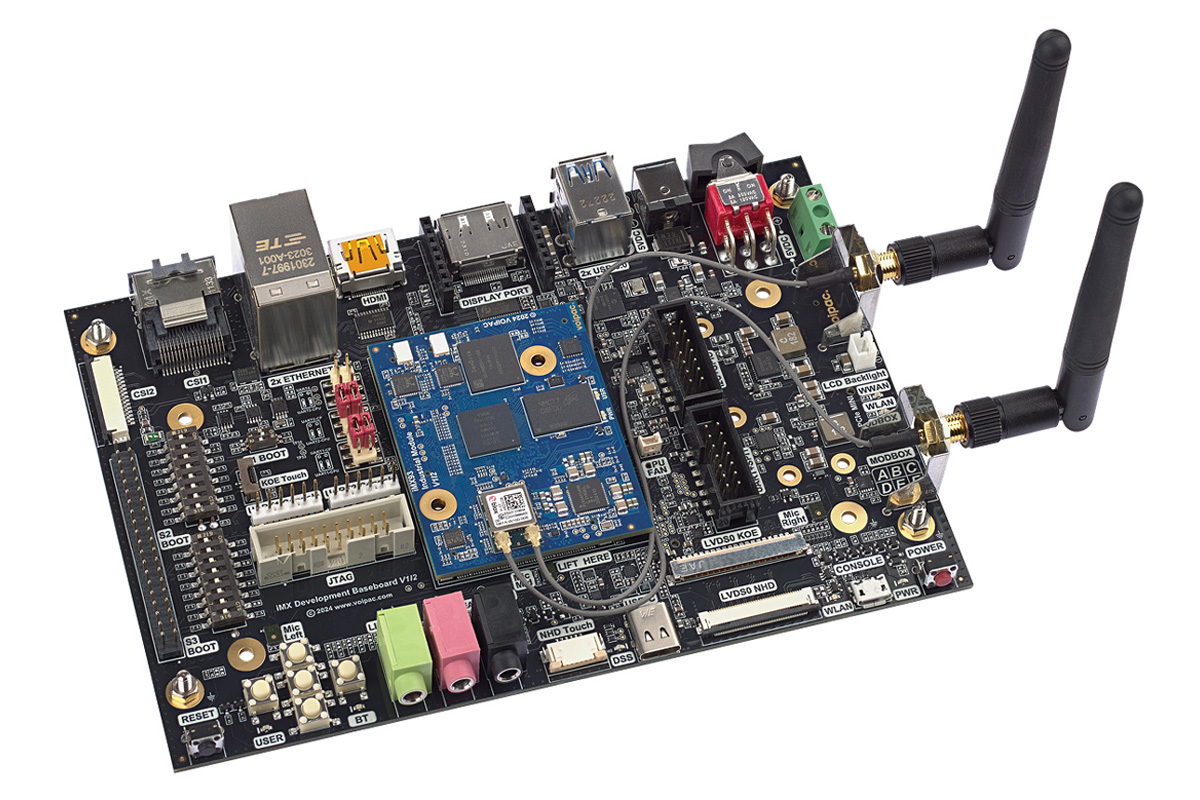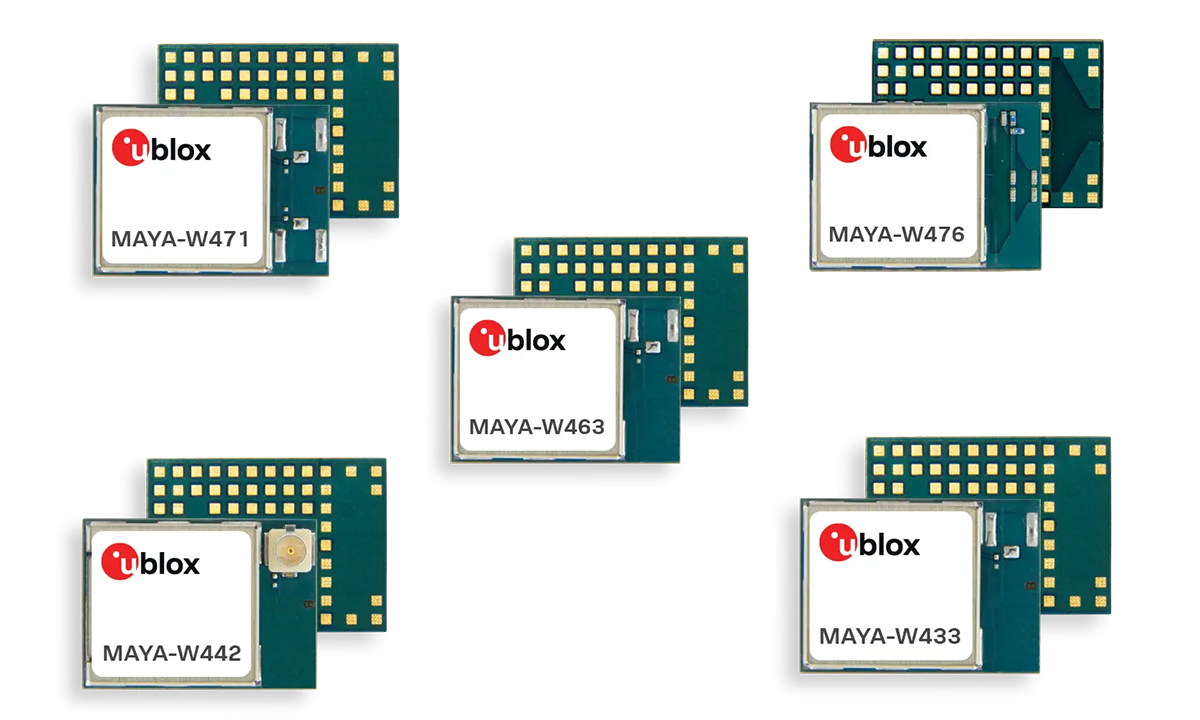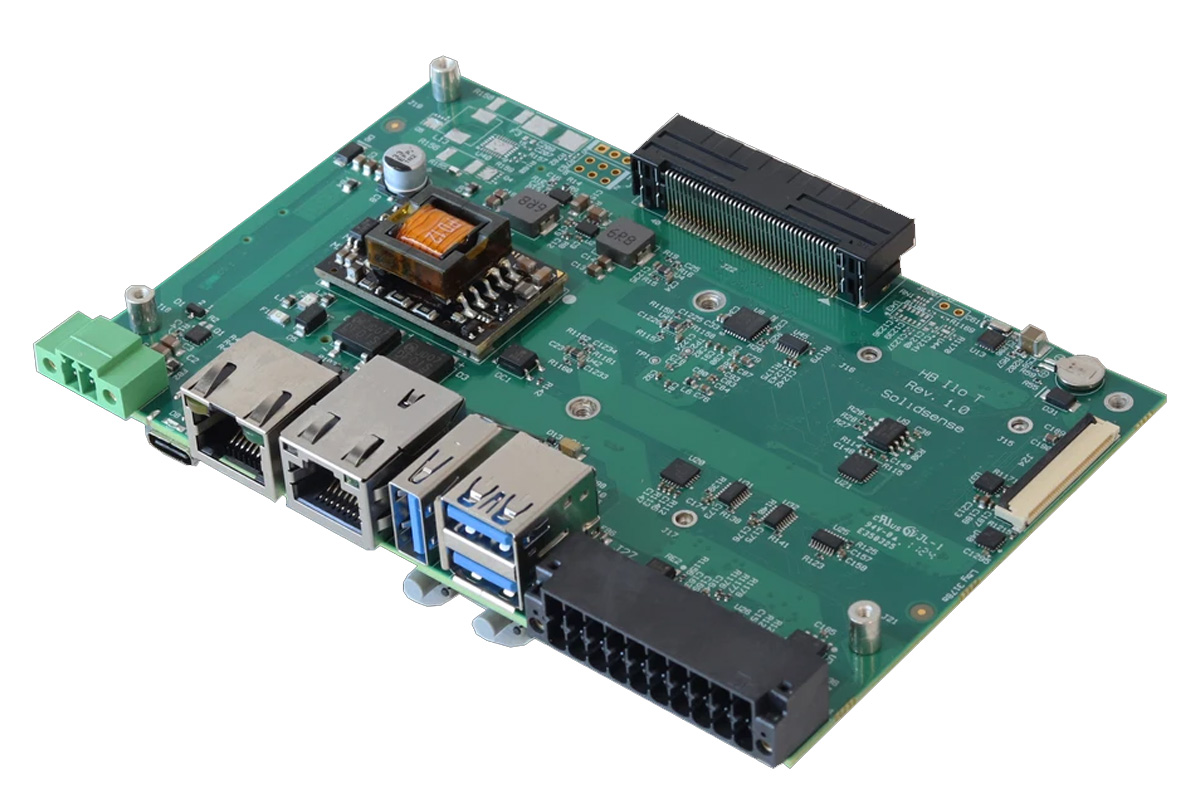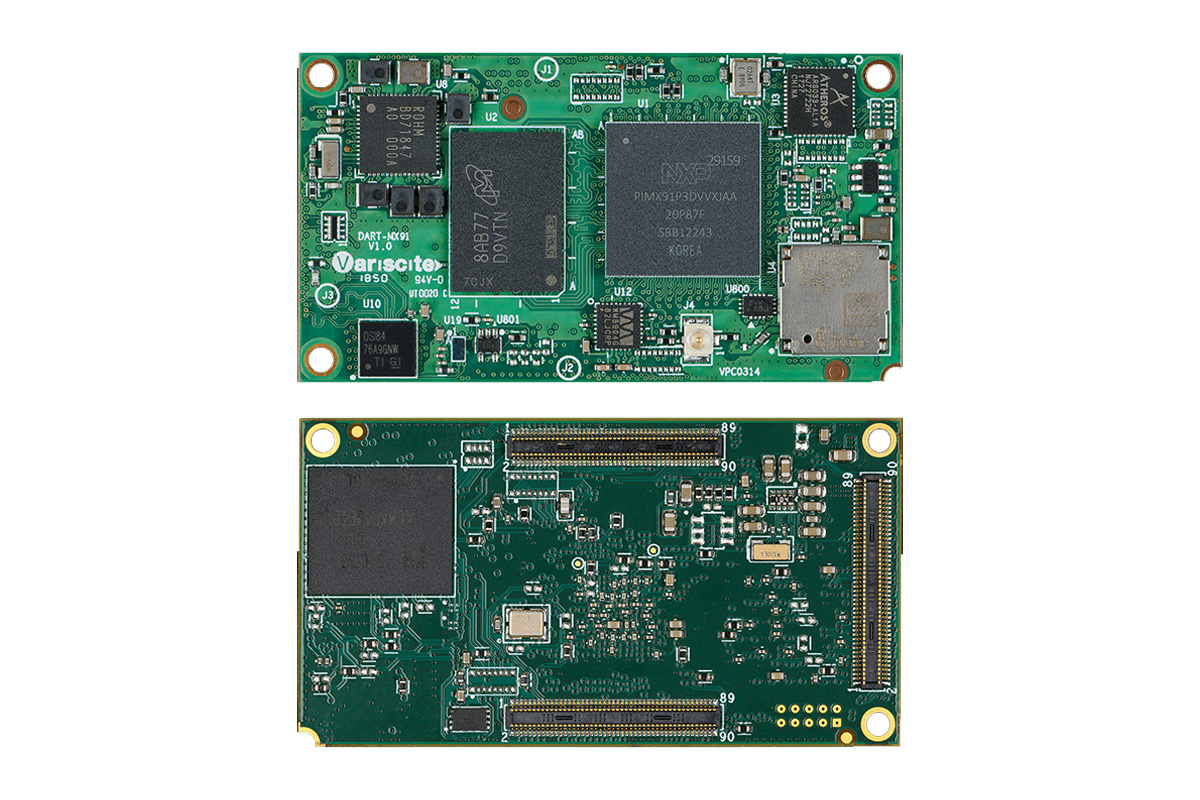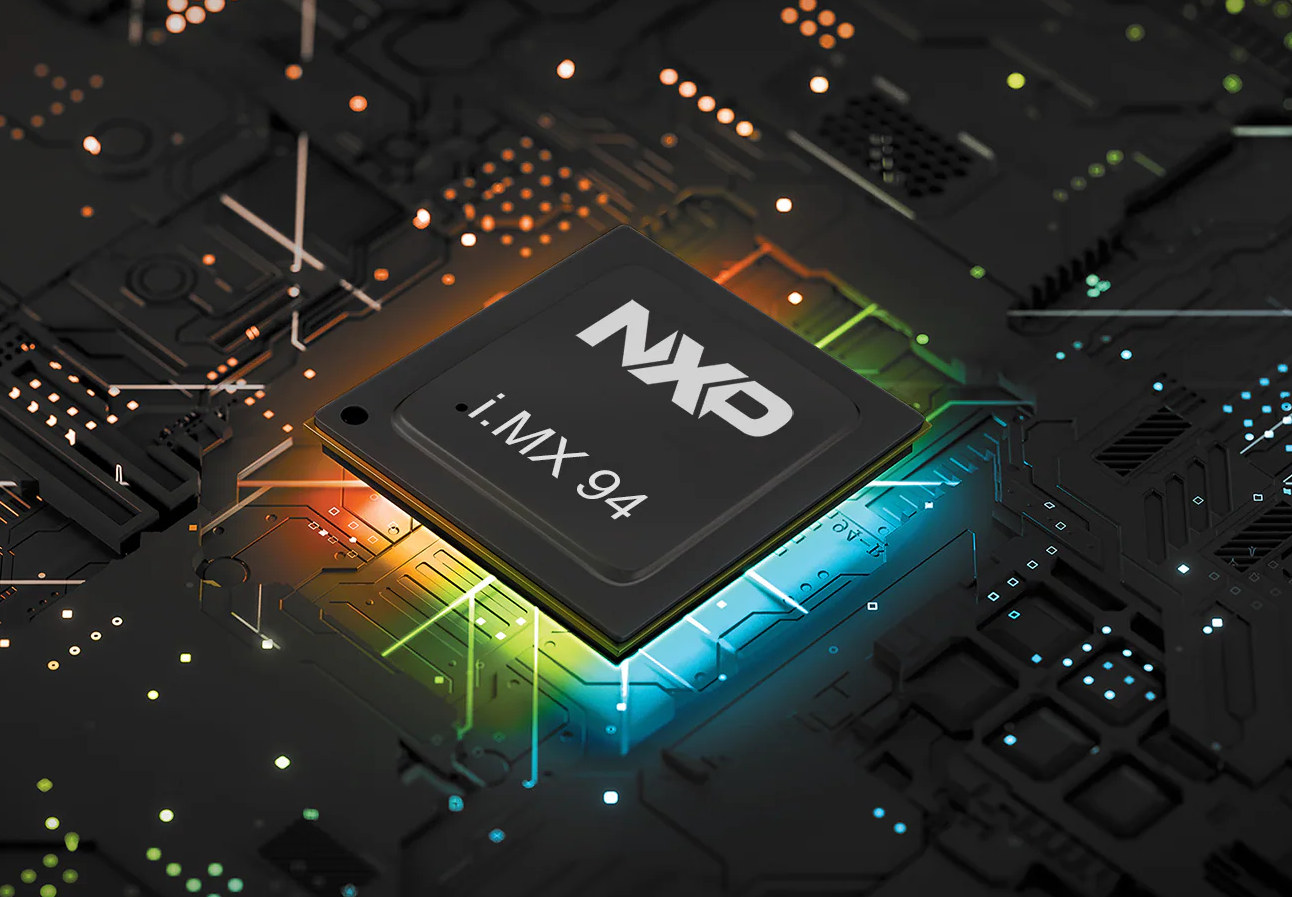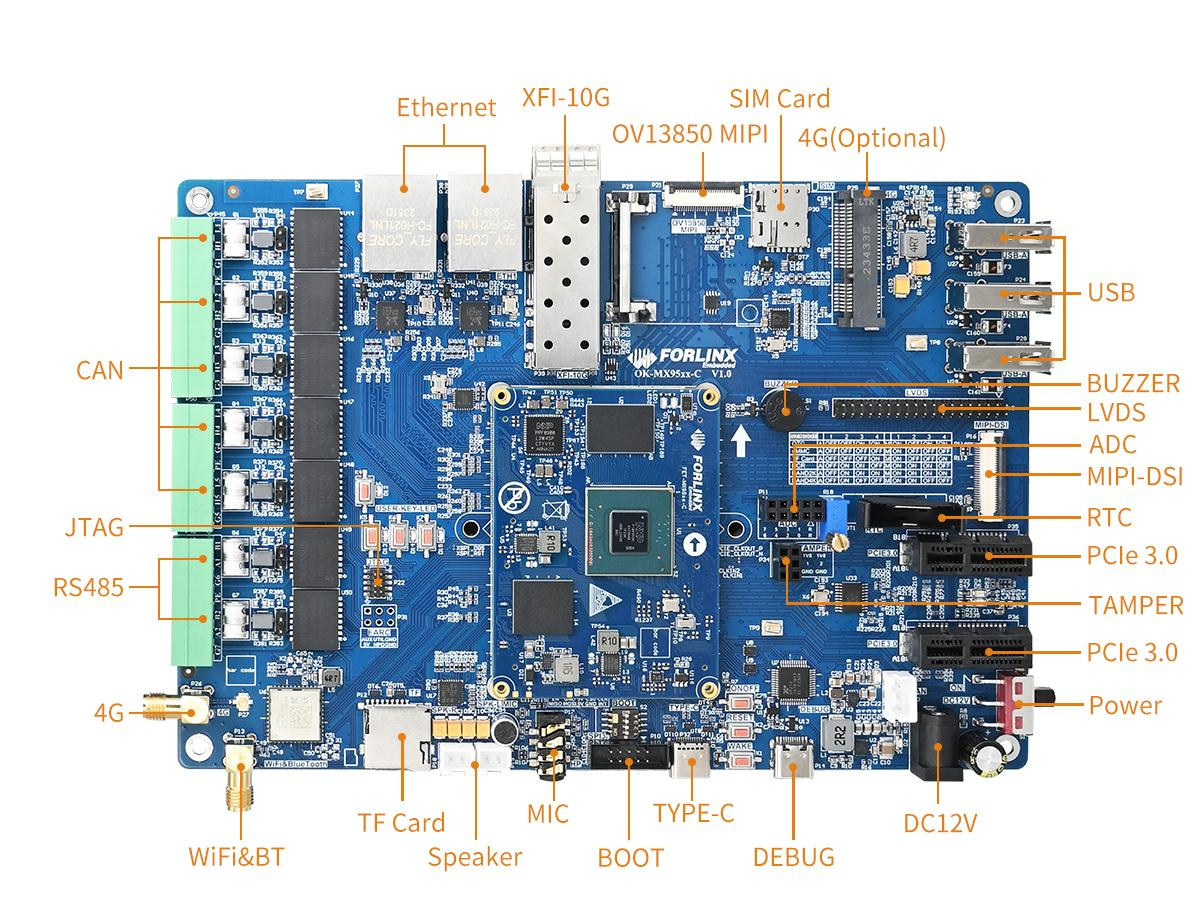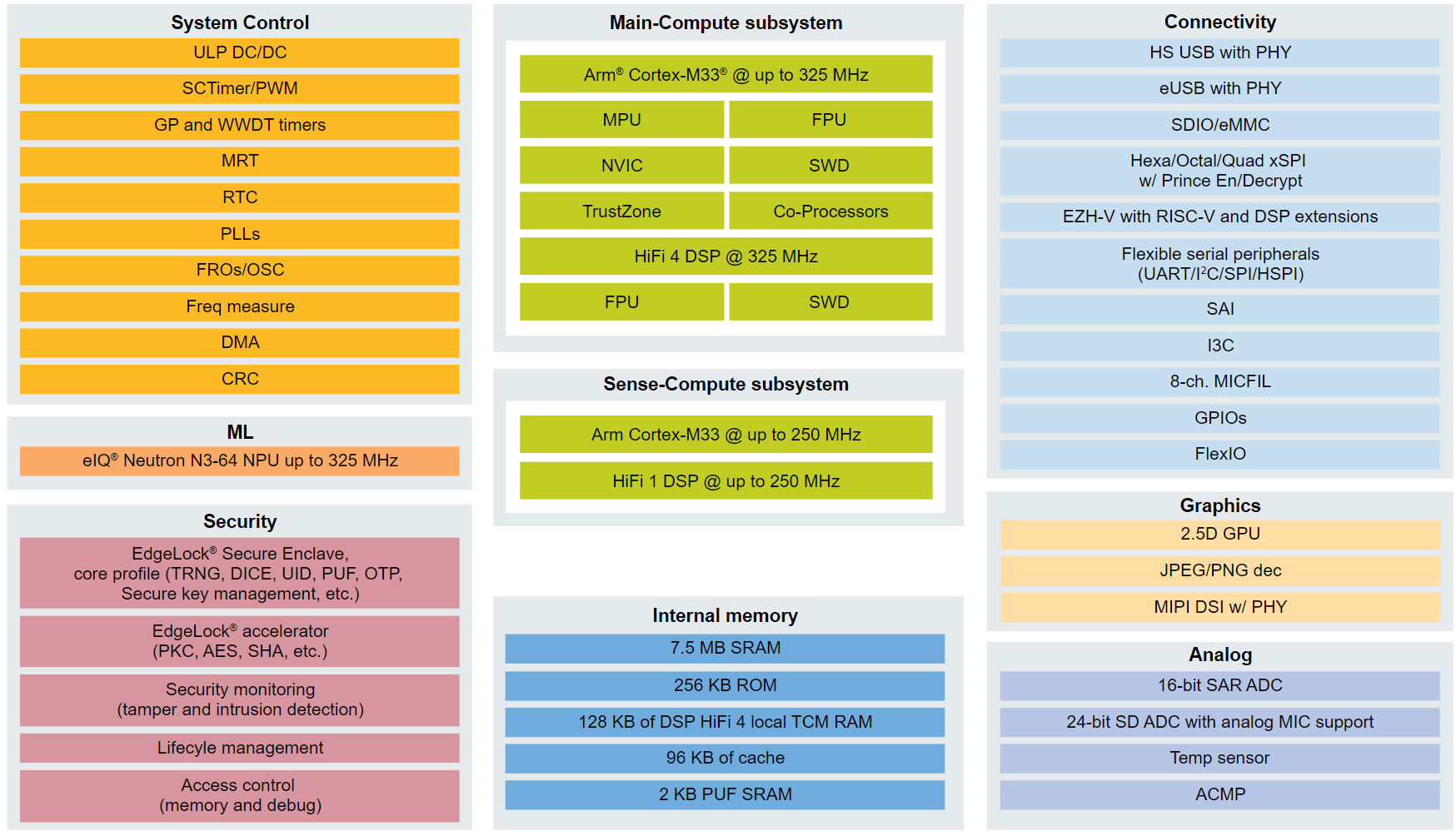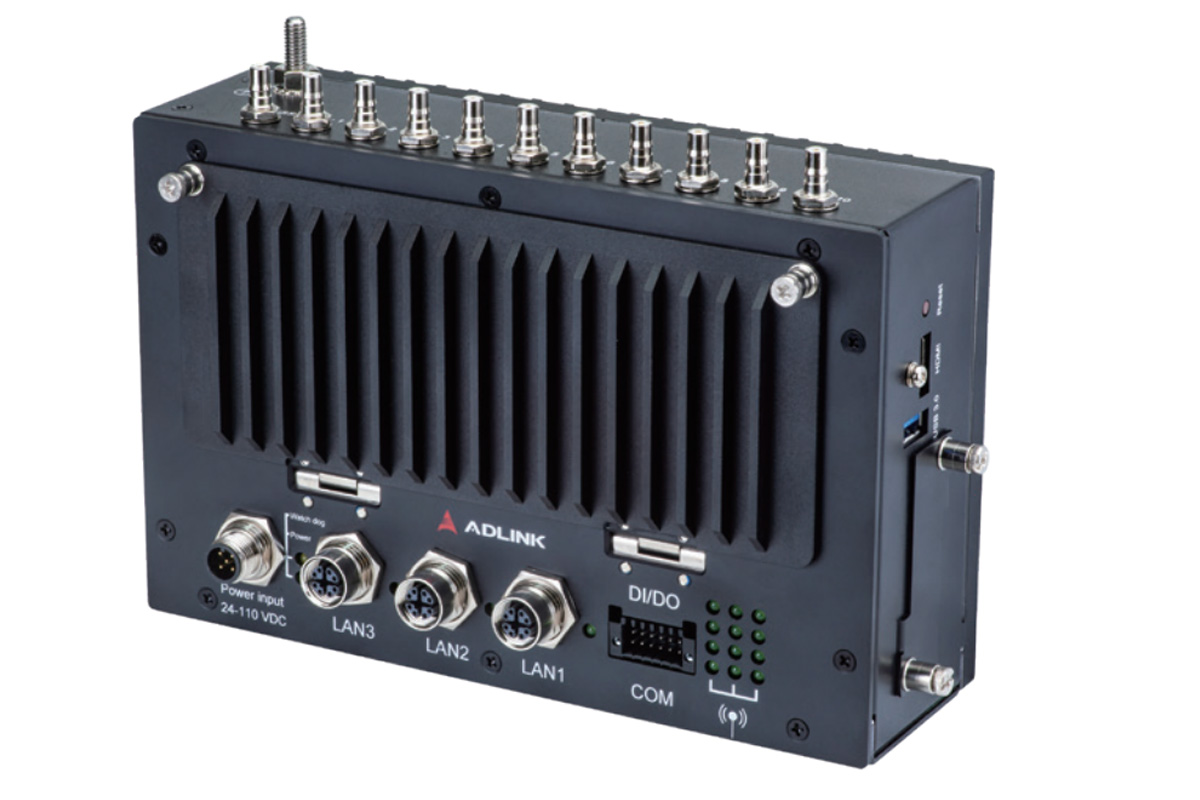VOIPAC Technologies has recently launched its iMX93 Industrial Development Kit (iMX93 module and iMX development baseboard) which comes in Max, Pro, Basic, and Lite configurations. The system-on-module (SoM) is built around the NXP i.MX93 SoC with dual-core Arm Cortex-A55 application processor running at up to 1.7GHz, a Cortex-M33 co-processor running at up to 250MHz, and an Arm Ethos-U65 microNPU with up to 0.5 TOPS of AI performance. Other features include DDR4 memory, eMMC Flash, and industrial-grade 100-pin shielded connectors for signal integrity and thermal performance. Additionally, the devkit also exposes CAN, PWM, ADC, etc.. signals and supports WiFi 6, Bluetooth 5.3, and dual GbE. These features make the VOIPAC iMX93 industrial development kit suitable for applications including AI, machine learning, human-machine interface (HMI) solutions, and more. iMX93 Industrial Development Kit specifications: System-on-Module (four options) iMX93 Industrial Module Max SoC – NXP i.MX 93 dual-core @ 1.7 GHz with real-time Cortex-M33 co-processor NPU […]
u-blox MAYA-W4 tri-radio IoT module features NXP IW610 chipset with Wi-Fi 6, Bluetooth 5.4, and 802.15.4 radios
Last year, we covered the u-blox MAYA-W3 module, which was based on the Infineon AIROC CYW5551x chipset and utilized separate chipsets for 2.4 GHz, 5 GHz, and 6 GHz frequencies. Now, u-blox has introduced the MAYA-W4 series, a host-based Wi-Fi 6, Bluetooth 5.4, and 802.15.4 module built on the NXP IW610 chipset. Designed for industrial and commercial applications such as building automation, energy management, smart homes, and healthcare, the MAYA-W4 series supports SISO Wi-Fi 6 with a 20 MHz channel width, ensuring reliable performance in dense network environments. These modules can function as access points, stations, P2P devices, or in mixed modes. The MAYA-W4 modules are compatible with the Matter protocol over Thread and Wi-Fi, facilitating seamless integration across ecosystems. With a compact size of 10.4 x 14.3 mm, these modules rank among the smallest Wi-Fi 6 SMD modules and are available with integrated antennas or U.FL connectors. Rigorous testing […]
SolidRun unveils HummingBoard i.MX8M IIOT SBC and the IIOT-200-8M Gateway for Edge AI and industrial IoT applications
SolidRun has recently introduced HummingBoard i.MX8M IIOT SBC and IIOT-200-8M Gateway built around the NXP i.MX 8M Plus Edge AI processor. Designed for IIoT and HMI applications the SBC hosts the NXP i.MX 8M Plus SOM which gives access to various connectivity options, including dual Gigabit Ethernet, Wi-Fi/Bluetooth, CAN-FD, RS232/RS485, and audio. Additionally, it has support for industrial protocols such as Modbus and MQTT, making it suitable for factory automation and smart energy projects. Based on the HummingBoard i.MX8M IIOT SBC, the IIOT-200-8M Gateway features a DIN-rail mountable design, which sacrifices some I/O interfaces to meet the demands of harsh deployment environments. Both products support Industrial temperature ranges, fanless construction, and compact dimensions, making them reliable choices for demanding applications like industrial automation, predictive maintenance, and remote monitoring. HummingBoard i.MX8M IIOT SBC Specifications SoC – NXP i.MX 8M Plus AI SoC CPU Quad-core Arm Cortex-A53 processor @ up to 1.6 GHz […]
Variscite DART-MX91 SoM offers dual GbE, WiFi 6, 15 years support
The Variscite DART-MX91 system-on-module (SoM) is a compact, cost-effective NXP i.MX 91 Arm Cortex-A55 module which is part of the DART Pin2Pin family already includes the DART-MX93 and DART-MX8M-PLUS among others. The SoM supports up to 2GB of LPDDR4 RAM and 8 to 128 GB of EMMC storage along with dual CAN-FD, dual Gigabit Ethernet, and dual USB interfaces. Wireless options include certified Wi-Fi 6, Bluetooth 5.4, and optional 802.15.4 for low-power wireless communication. Additionally, it supports three I2S audio interfaces, S/PDIF, and support for both digital and analog stereo mics along with 8-bit parallel camera interfaces and display with a capacitive touch controller. Variscite DART-MX91 SoM Specifications SoC – NXP i.MX91 single-core Cortex-A55 processor clocked at 1.4 GHz with 32 KB I-cache and D-cache, 256KB L2 cache (no 3D GPU) System Memory – Up to 2GB LPDDR4 Storage – 8 to 128GB eMMC flash Networking Qualcomm Atheros AR8033 Gigabit […]
NXP i.MX 94 octa-core Cortex-A55/M33/M7 processor targets Edge AI industrial and automotive applications
NXP i.MX 94 is an octa-core Arm SoC with up to four Cortex-A55 application cores, two Arm Cortex-M33 real-time/functional safety cores, two Arm Cortex-M7 real-time/functional safety cores, and an NXP eIQ Neutron NPU designed for Edge AI industrial and automotive applications I initially thought it would be a cost-down version of the NXP i.MX 95, and while it shares many of the same features, it’s more an application-specific processor designed specifically for industrial and automotive applications, lacking a 3D GPU, camera input interfaces, a MIPI DSI display interface, and 10GbE networking, but increasing the number of real-time cores (at the cost of application cores) and adding several networking features such as an Ethernet time-sensitive networking (TSN) switch, 2.5GbE interface, an Ethercat controller, and support for industrial protocols like Profinet or OPC-UA FX. NXP i.MX 94 specifications: CPU Up to 4x Arm Cortex-A55 cores 2x Arm Corex-M7 cores, one for functional […]
Forlinx launches NXP i.MX 95 SoM and development board with 10GbE, CAN Bus, RS485, and more
Forlinx FET-MX95xx-C is a system-on-module (SoM) based on NXP i.MX 95 SoC with up to six Cortex-A55 cores, an Arm Cortex-M7 real-time core clocked at 800 MHz, an Arm Cortex-M33 “safety” core clocked at 333 MHz, and equipped with 8GB LPDDR4x and 64GB eMMC flash. The company also provides the feature-rich OK-MX95xx-C development board based on the i.MX 95 module with a wide range of interfaces such as dual GbE, a 10GbE SFP+ cage, terminal blocks with RS485 and CAN Bus interface, three USB Type-A ports, two PCIe slots, and more. Forlinx FET-MX95xx-C system-on-module Specifications: SoC – NXP i.MX 9596 CPU 6x Arm Cortex-A55 application cores clocked at 1.8 GHz (industrial) with 32K I-cache and D-cache, 64KB L2 cache, and 512KB L3 cache Arm Cortex-M7 real-time core clocked at 800 MHz Arm Cortex-M33 safety core clocked at 333 MHz GPU – Arm Mali-G310 V2 GPU for 2D/3D acceleration with support […]
NXP i.MX RT700 dual-core Cortex-M33 AI Crossover MCU includes eIQ Neutron NPU and DSPs
NXP has recently announced the release of NXP i.MX RT700 RT700 AI crossover MCU following the NXP i.MX RT600 series release in 2018 and the i.MX RT500 series introduction in 2021. The new i.MX RT700 Crossover MCU features two Cortex-M33 cores, a main core clocked at 325 MHz with a Tensilica HiFi 4 DSP and a secondary 250 MHz core with a low-power Tensilica HiFi 1 DSP for always-on sensing tasks. Additionally, it integrates a powerful eIQ Neutron NPU with an upgraded 7.5 MB of SRAM and a 2D GPU with a JPEG/PNG decoder. These features make this device suitable for applications including AR glasses, hearables, smartwatches, wristbands, and more. NXP i.MX RT700 specifications: Compute subsystems Main Compute Subsystem Cortex-M33 @ up to 325 MHz with Arm TrustZone, built-in Memory Protection Unit (MPU), a floating-point unit (FPU), a HiFi 4 DSP and supported by NVIC for interrupt handling and SWD […]
ADLINK AVA-1000 is a rugged EN50155-compliant T2G gateway for railway and industrial applications
The ADLINK AVA-1000 T2G gateway is a rugged, EN50155-compliant T2G (Train-to-Ground) gateway designed for railway and industrial environments. Powered by a choice of NXP i.MX8M Plus Quad Cortex-A53 processor or an Intel Processor N50 Alder Lake-N processor. The i.MX8M Plus model is equipped with up to 8GB LPDDR4 and a 64GB eMMC flash whereas the Alder Lake variant features up to 4GB LPDDR5 memory and a 32GB eMMC flash. In terms of connectivity, the gateway features three M12 GbE ports and supports a wide range of options including 5G, WiFi 6, and GNSS. The AVA-1000 T2G gateway’s fanless design, wide operating temperature range, and 24-110V DC input ensure reliable operation in industrial environments. Additionally, its compliance with EN50155 and other industrial standards makes it ideal for various industrial applications. AVA-1000 T2G gateway specifications System Processor (multiple options) NXP i.MX8M Plus quad-core Cortex-A53 processor @ up to 1.8 GHz with Cortex-M7 […]


